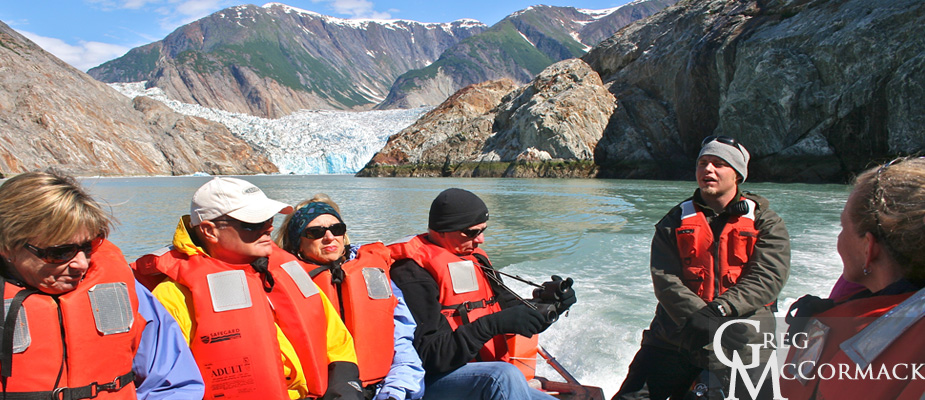Search results
Sunday | July 17
October 3, 2011 by admin
Filed under InnerSea Discoveries
Tracy Arm & Sawyer Glaciers
“Domes swell against the sky in fine lines as lofty and as perfect in form as those of the California valley, and rock-fronts stand forward, as sheer and as nobly sculpted. No ice-work that I have ever seen surpasses this, either in the magnitude of the features or effectiveness of composition.” –John Muir
John Muir, writing in his book Travels in Alaska, described Tracy Arm as a “wild unfinished Yosemite”.
We awake to a fine day. The anchor is lifted at 6 a.m. and the Wilderness Discoverer cruises up the magnificent fiord that is Tracy Arm. Yosemite-like domes, waterfalls that seem to come right out of the sky, and rainforests that exhibit many shades of green are passed as we motor at the speed of 9-knots up the 23-miles to the face of the Sawyer Glacier.
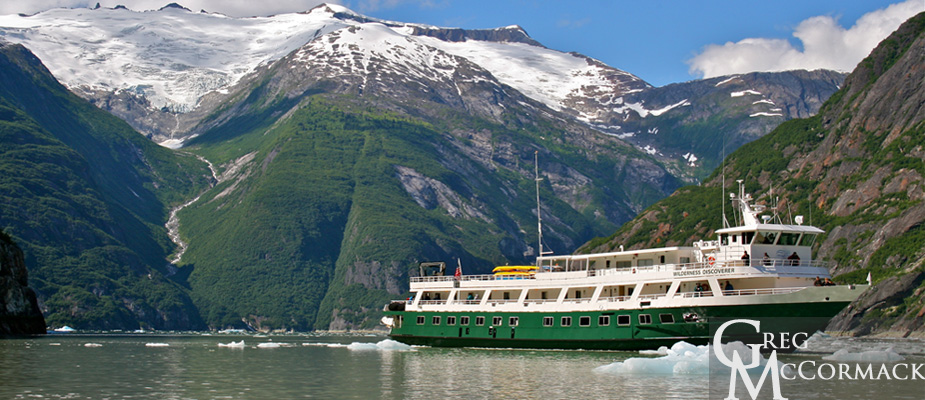
This is the Tongass National Forest, the largest National Forest in the United States at almost 17 million acres in size. It ranges from the Southeast Alaska panhandle between Ketchikan and Yakutat. It incorporates the Alexander Archipelago, located in the Inside Passage between the Coast Mountain Range and the Gulf of Alaska in the Northeast Pacific Ocean. The Tongass happens to have the largest contiguous, intact temperate rainforest in the world.
The temperate rainforest biome ranges from the narrow strip of land between northern California and Kodiak Island, Alaska. Some of the hallmarks of this rainforest is the presence of Sitka Spruce, a profusion of epiphytes such as mosses and lichens, a climate regime that includes around 100-inches of precipitation a year and the presence of nurse logs.
Small boat tours are offered to bring guests up close to the Sawyer Glacier. Photographic opportunities abound for camera-toting guests.
Brash ice is quite thick. Birds are flying back and forth in front of the tidewater glacier and seals are hauled out on small ice-bergs or “growlers”.
We are lucky to have two wilderness kayak rangers join us with two of their “artists-in-residence” volunteers. Our Tongass National Forest Rangers Solan Jensen and Sean Reilly give an insightful talk on the history of wilderness in the dining lounge.
After disembarking the kayak rangers, we ask guests to participate in three rounds of talks surrounding our adventure program of kayaking, stand-up paddleboarding or SUP, and how to behave in bear country. I lead the talk on SUP in the lounge with an assistant to “model” appropriate techniques.
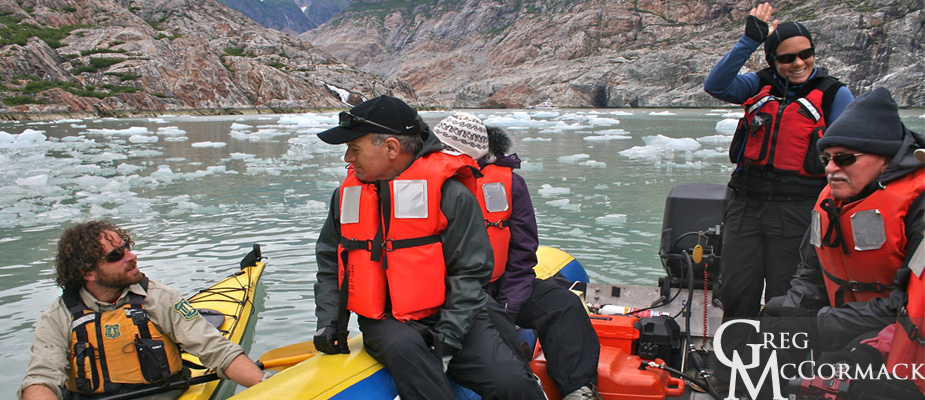
It’s amazing how SUP has become the latest trend in ocean sports. As a fitness sport, it uses all of the major muscle groups. It works the core and legs while you try to balance and the upper body while paddling.
It’s easy to carry a SUP and that is one of the major advantages over having a sea kayak. On calm, flat days the only real hazard for SUP’ers is navigating wakes from passing boats. These boards are wider and more stable than a regular surfboard. However, I would not recommended trying to walk the nose and “hanging ten”.
For novice paddleboarders, it’s worth trying it more than once to build a comfort level and to see if the sport is enjoyable. Every time you get out on the water while here on vacation will make it that much easier to try it again back home.
The minimal effort of SUP-ing (not a great acronym, I just realized) for just a few minutes while circumnavigating the Wilderness Discoverer will allow a partner or crew to photo-document your efforts. That way you can prove to kith and kin how adventurous you really were in Alaska.
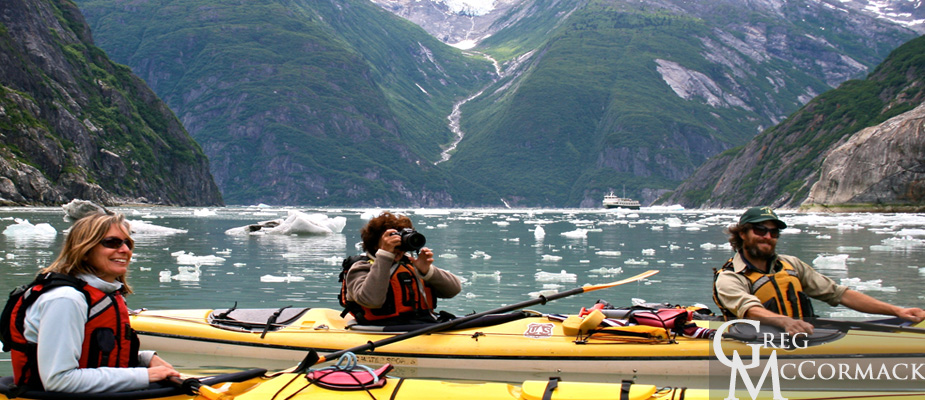
My overall message is to encourage folks to “get up, stand up…stand-up for bragging rights!”
The afternoon is spent whale watching in the waters adjacent to Admiralty Island National Monument. Kootznahoo or “Fortress of the Bears”, has the greatest concentration of brown bears in the world, about 1 bear per square mile on the 1,700 square mile island. We motor too far away to spot brown bears (visitors that want to see bears can go to Pack Creek on the northeast side of the island).
Humpback whales are spotted exhibiting a range of behavior such as spouting, lob-tailing and breaching. These fascinating baleen whales have travelled all the way from Hawai’i to feed all summer long.
Friends stay up late enjoying a lingering twilight and the ever-changing seascapes that almost hypnotize to a state of nirvana.
Saturday | July 2
September 14, 2011 by admin
Filed under InnerSea Discoveries
“If there is magic on this planet, it is contained in water.” –Loren Eisely
The M/V Wilderness Discoverer lifts anchor and motors north through Gastineau Channel and docks beneath the rising peaks of Mount Roberts and Mount Juneau. All (departing passenger) luggage is taken off of the vessel and carried up the dock ramp to the waiting buses.
A fond farewell takes place between crew and guests as the latter disembark to hug and shake hands with their favorite crew members on the dock. Great memories and sad goodbyes!
The excitement for the morning is when I crashed a fully-loaded, heavy rolling cart on the ramp leading down to the pier. Luckily none of the eggs in the 13-dozen box broke.
Note to self: Do not use a cart that lacks hand brakes when the tide is low. All of the carts but one has a hand brake. Kristen helps me re-load and we get back to transporting stores from truck to ship.
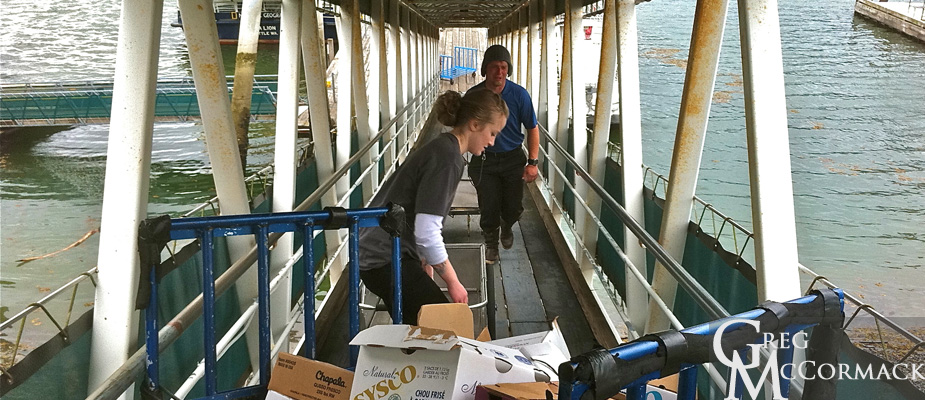
All available hands on the ships crew prepare for a new group of passengers that will board the vessel at 16:30 hours. All decks are swabbed, port holes washed, sheets changed, cabins and heads cleaned, dirty laundry and garbage hauled off ship, and galley stores stowed.
After our welcome aboard orientation meetings with the deck, engineering, hotel and expedition leads, the M/V Wilderness Discoverer pulls away from the Juneau dock and heads south in Gastineau Channel. We spot some Humpback Whales feeding just outside of the Taku Inlet and enjoy the sunset on the outside decks.
Our destination for tomorrow will be the one of three spectacular fiords in the Tracy Arm—Fords Terror Wilderness, about 46 miles south of Juneau. The area encompasses close to 700,000 acres of rugged Coast Range mountains bordering Holkham Bay, the spot where we will be anchoring tonight.
The three dramatic fiords are Endicott Arm, Fords Terror and Tracy Arm, all of which trend west-to-east through the Coast Mountain Range. The three tidewater glaciers drop down from the Stikine Icefield and regularly calve ice bergs into the ocean.


